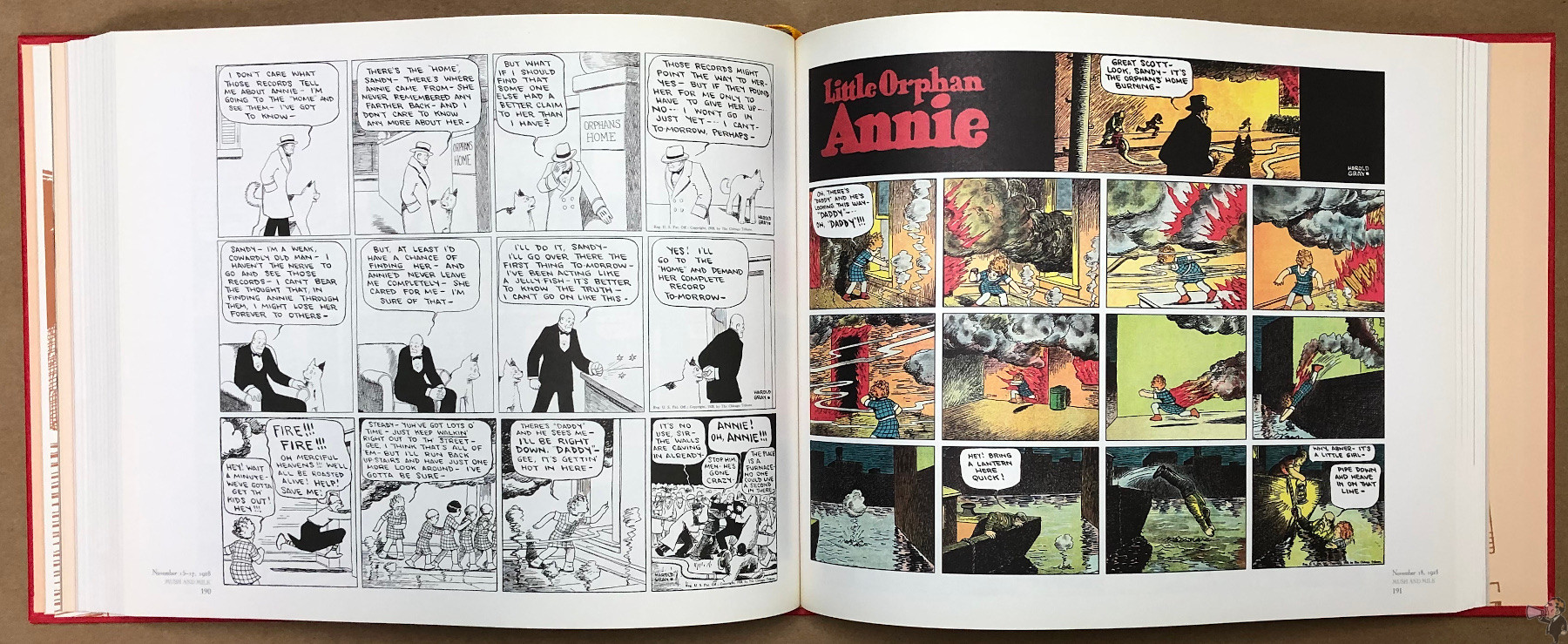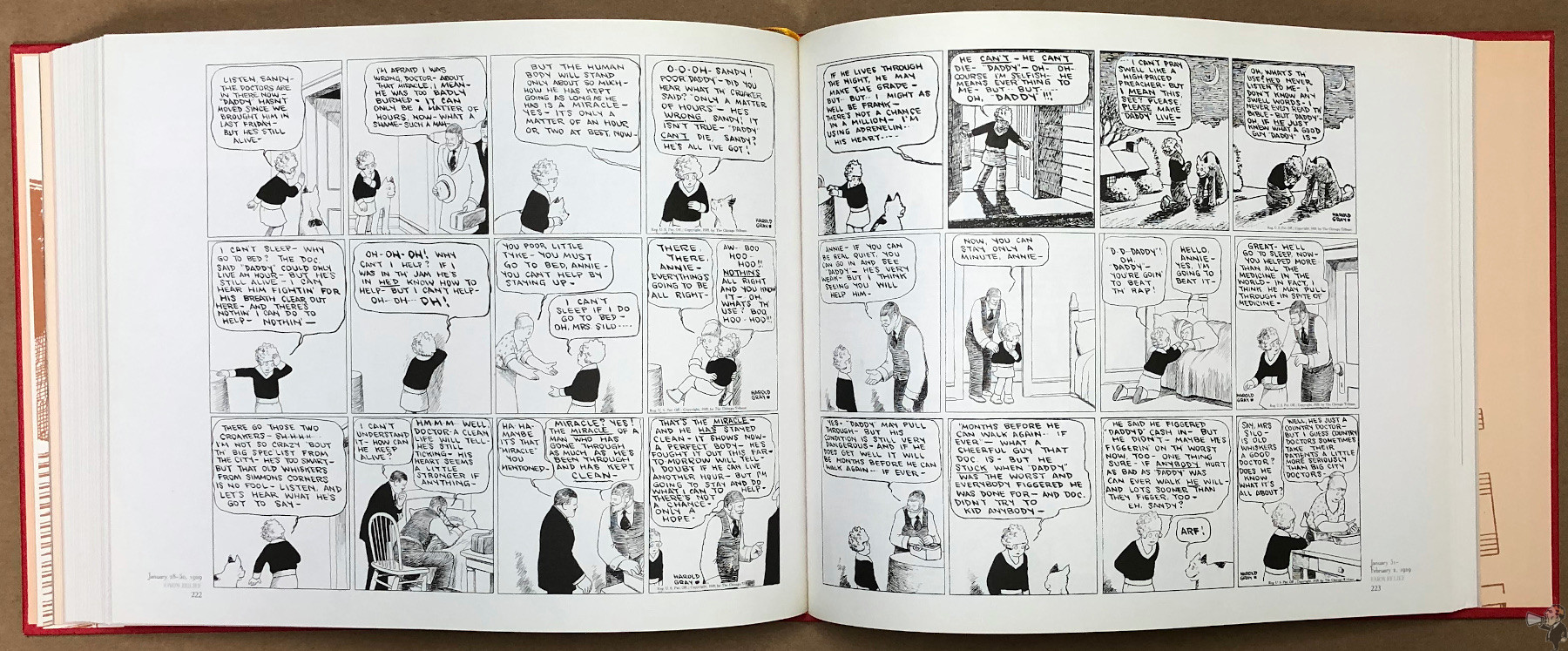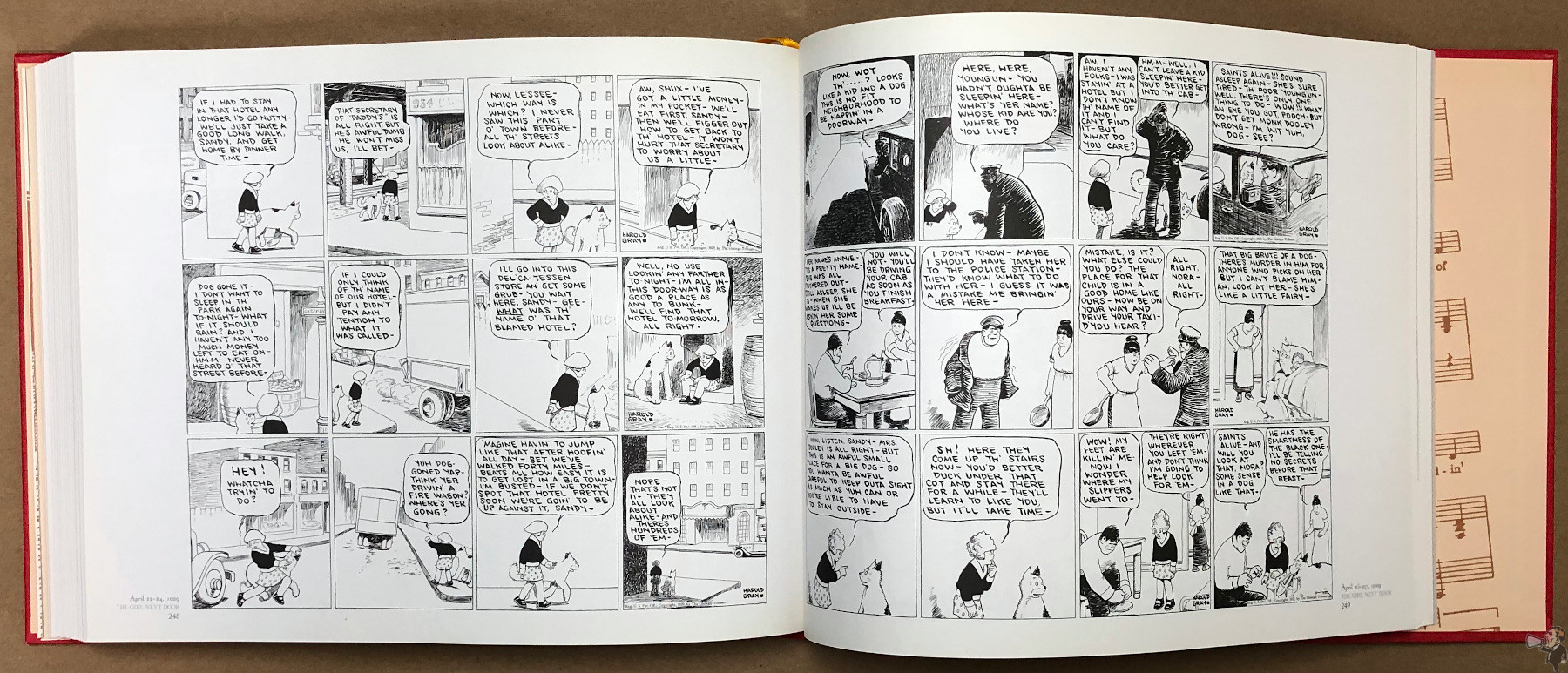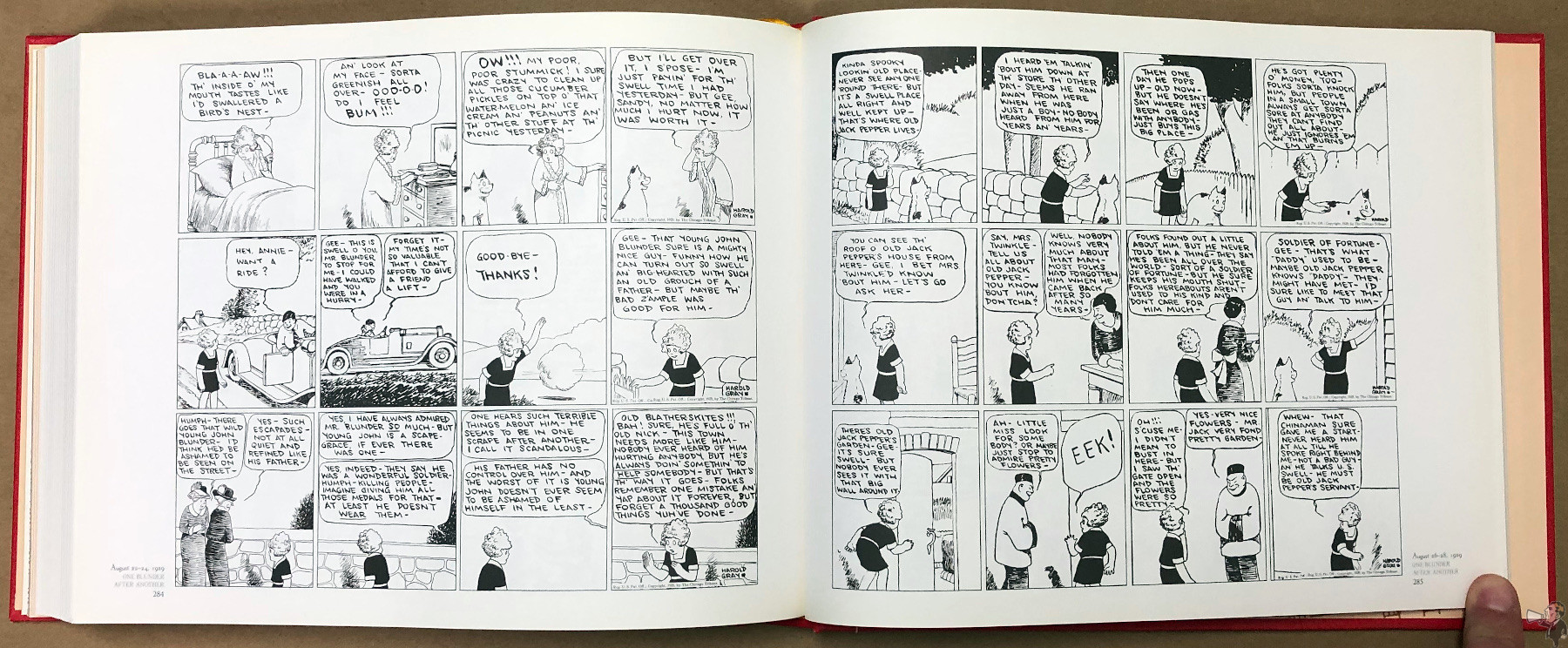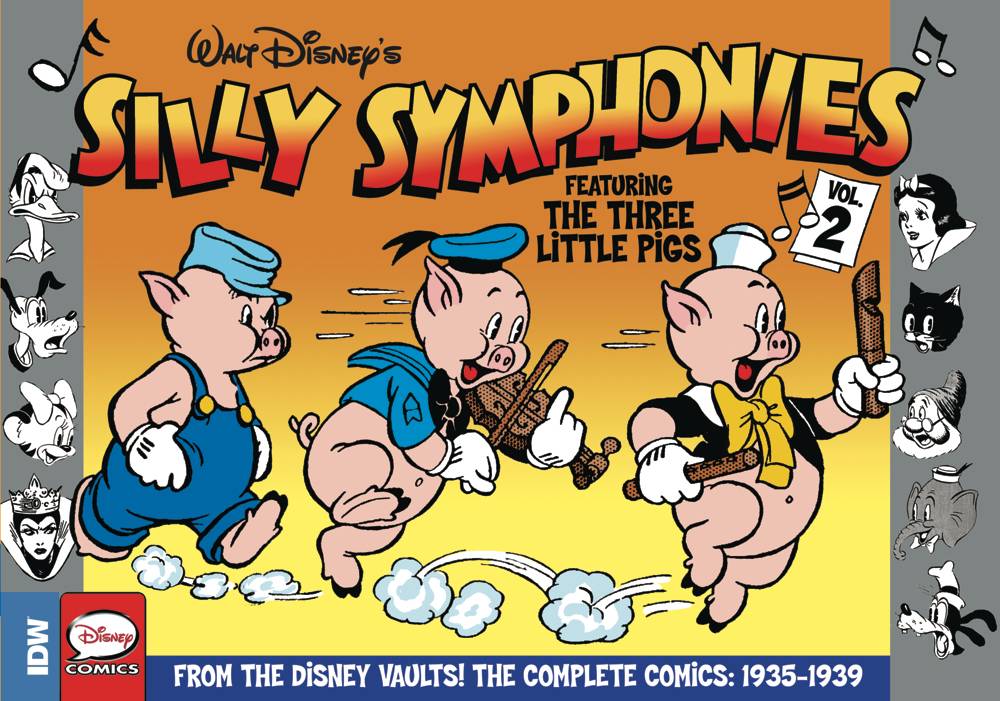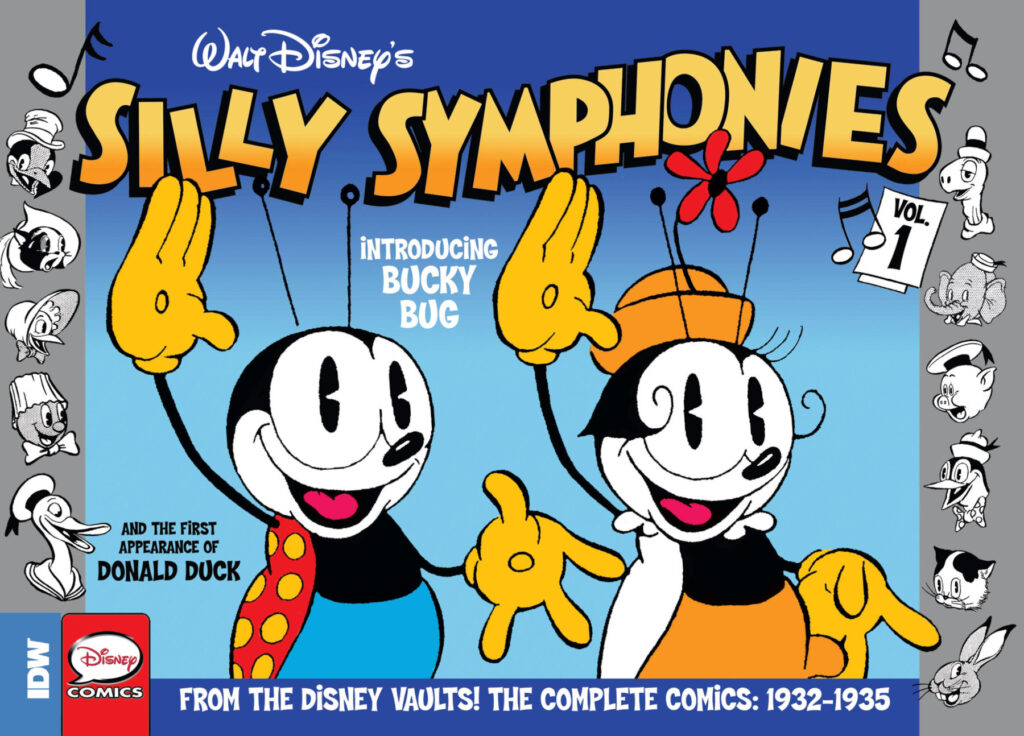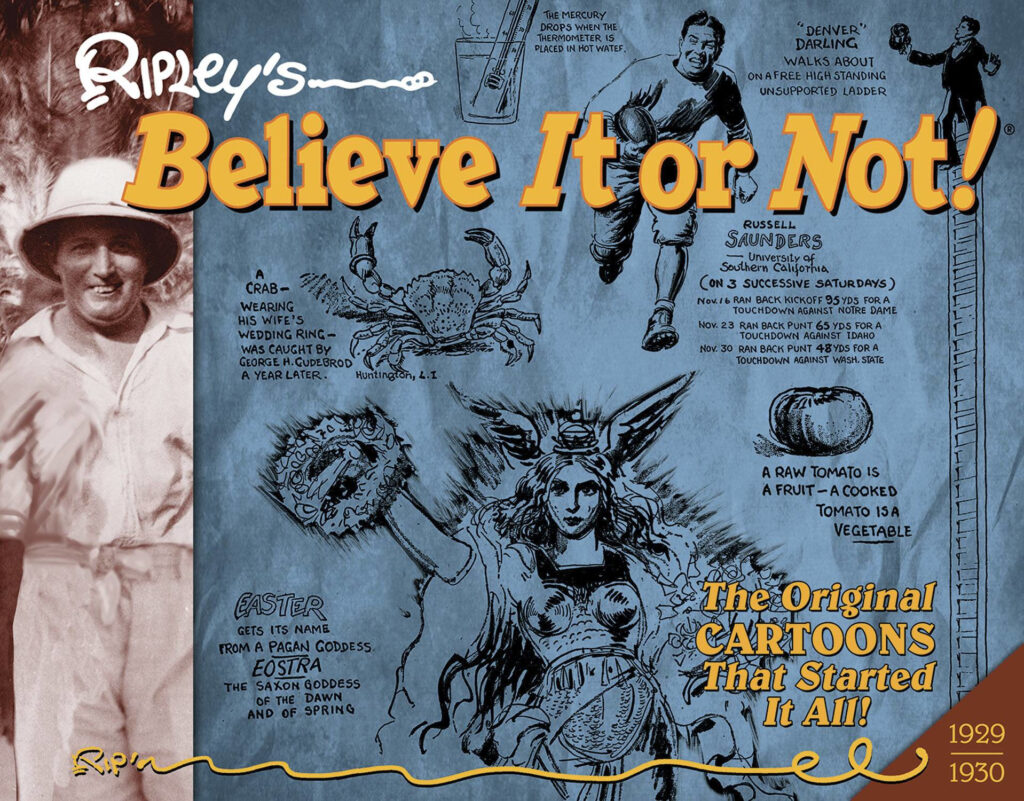America’s spunkiest kid stands for fair play as she gives the scoundrels and rats their just desserts! Little Orphan Annie-the original female comics hero-takes on chiseling business men and a gang of thieves, armed only with her sharp wit and mean left hook. Then she helps her surrogate parents by nursing “Daddy” Warbucks to health and helping save the Silos’ family farm.
- Library Of American Comics, January 2009
- 320 pages, 11″ x 8.5″
- ISBN 978-1-60010-197-7
- $39.99 USD
- Order online: Amazon
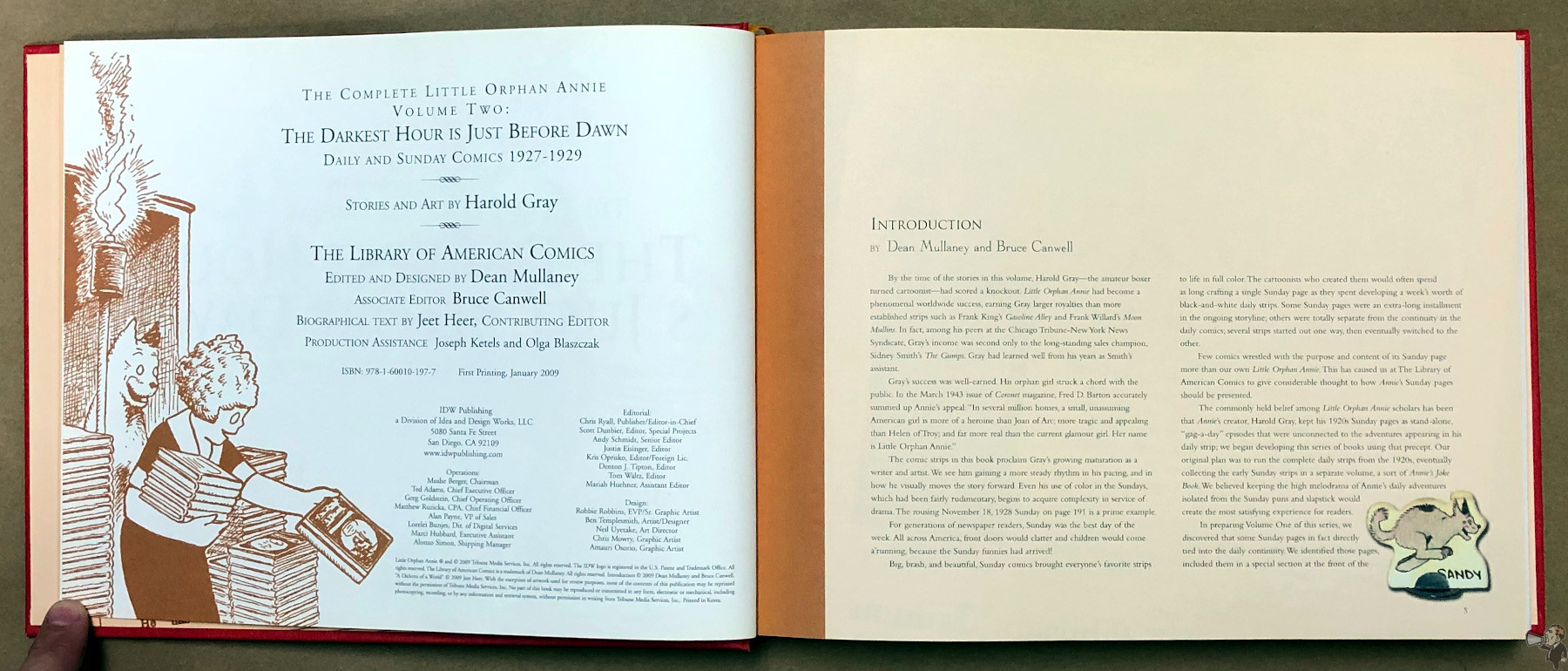
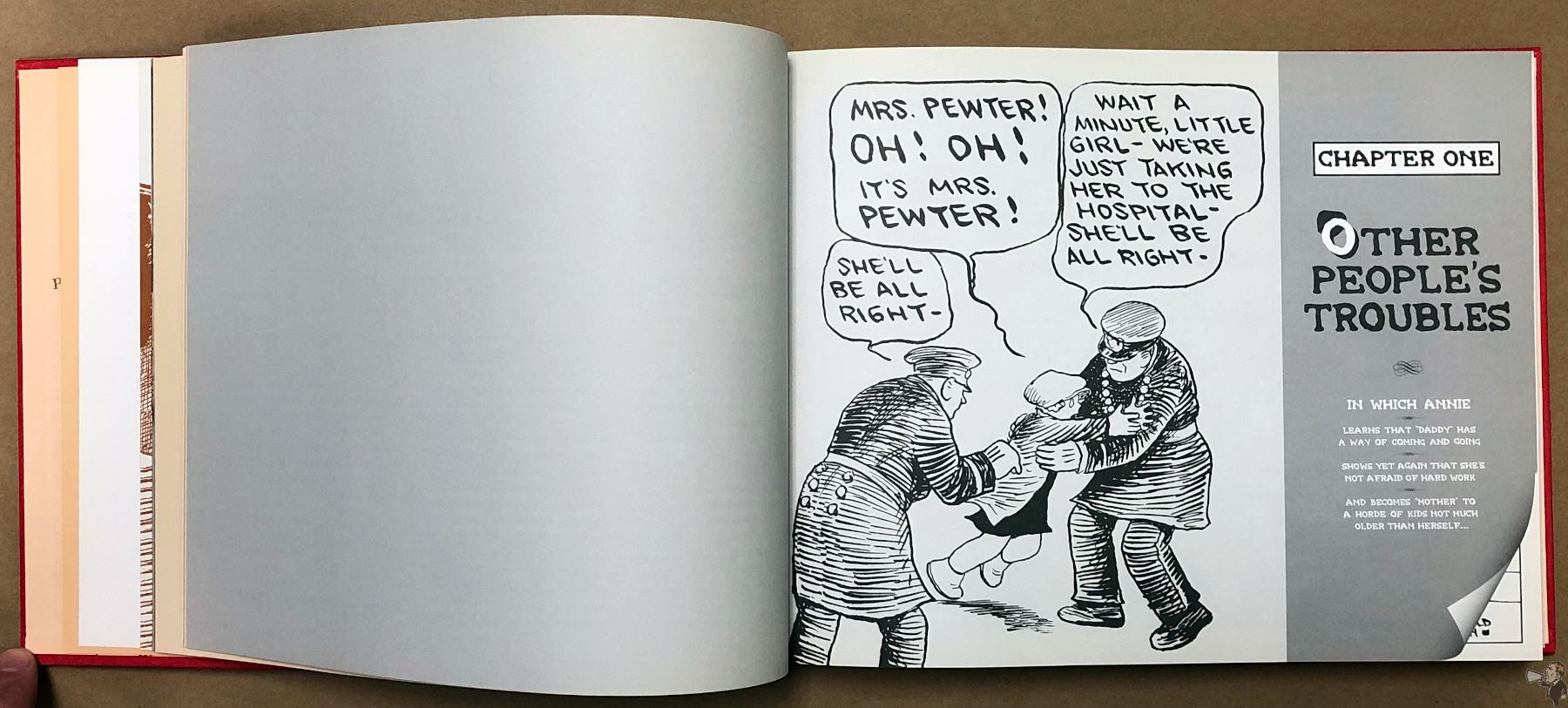
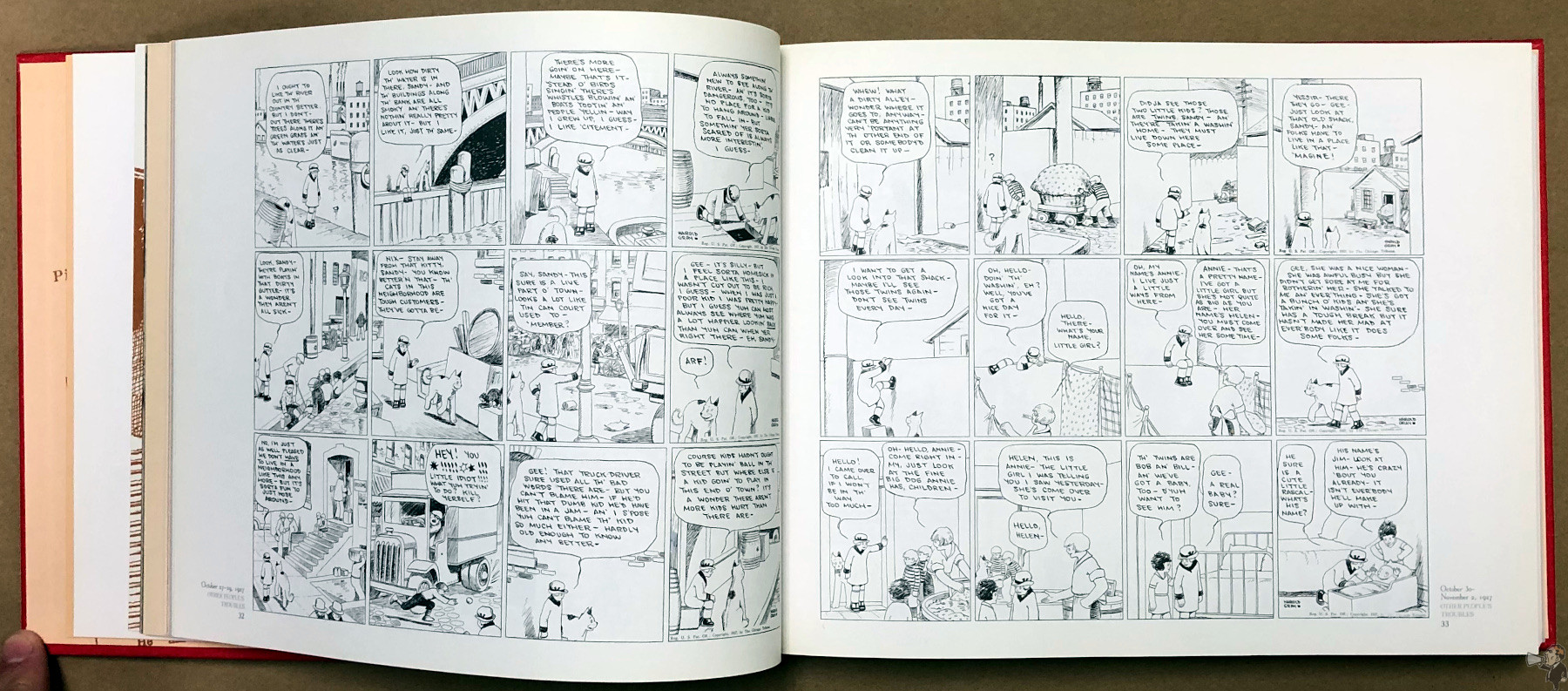
Following Annie into her second volume and we start to see a pattern emerging of neglect from “Daddy” Warbucks. He takes Annie away from whatever poor circumstance she’s in, drops her into a life of luxury, then goes away somewhere and fail to return.
It’s interesting how Gray in these early years keeps going to the same well. This time Annie gets kicked out the hotel she’s staying in because Warbucks left and the money ran out. Later they’re back together at another hotel and he leaves her again, but this time she goes for a walk and can’t remember the hotel’s name or where it is. Surely there could have been a better angle to play here than Annie, who triumphs over every situation through hard work and perseverance, had to live on the street because she couldn’t remember the hotel’s name? Leapin’ lizards!
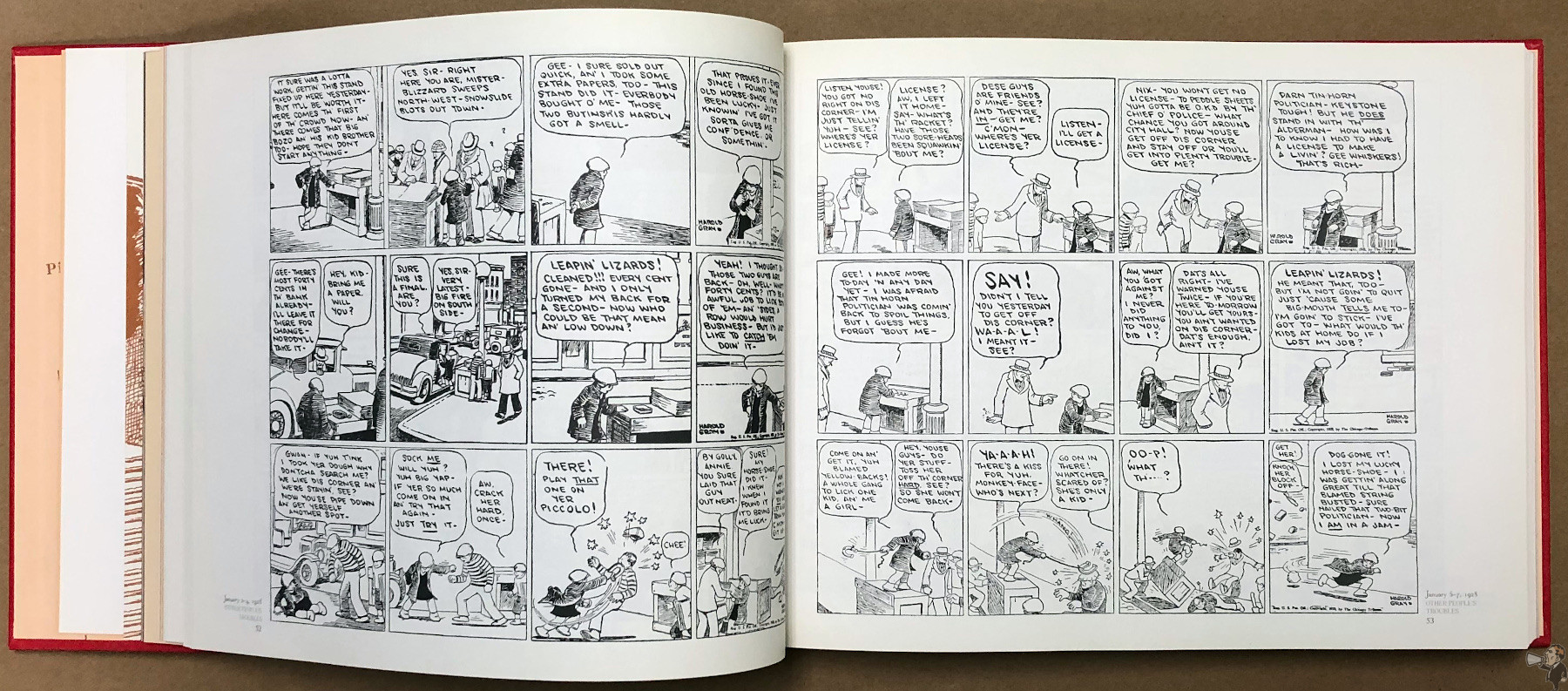


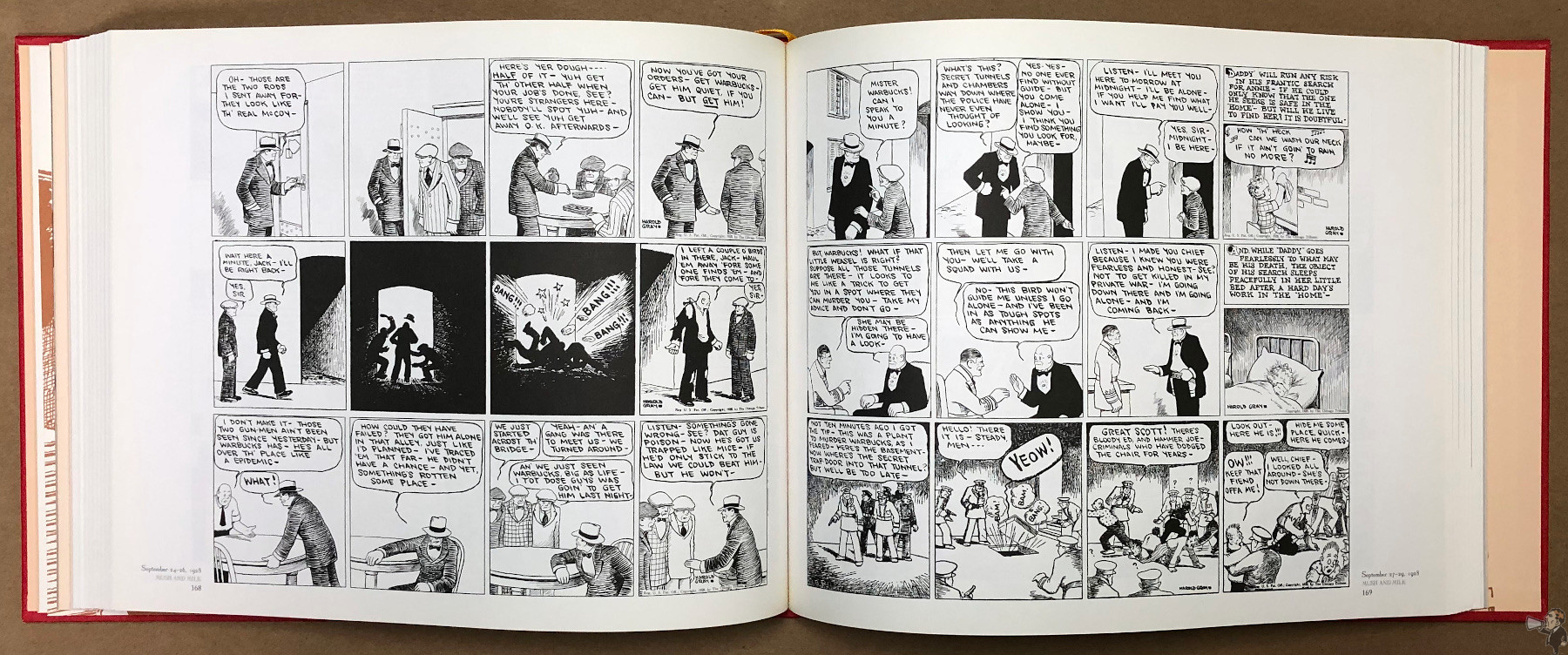
The most engaging adventure this time around is Annie’s small business venture of a corner newsstand. It’s such a slice of early 20th century America that hooks your interest and keeps you flipping pages.
A close second is Annie’s work at a diner, where she strikes for pay equity and eventually takes control. Gray’s weaving of social issues into the strip is deft; to the point without being preachy.
And of course, day in and day out is Annie’s unflinching work ethic and positive attitude in the face of insurmountable odds. It’s those quiet moments when that determination slips and Gray illustrates her turned away from the reader crying against a wall that make us all accept our circumstances.
Gray’s art style is slowly evolving but is almost imperceivable even in these volumes of two years’ worth of strips. He began so well with the character designs that we see evolution in the supporting cast and environments, with Annie and Warbucks static.
Sundays are integrated into the story in this volume so we see them every three pages, with six black and white strips in between. They add a wonderful splash of colour while advancing the storyline; no recapped filler here.
The production of the book is excellent: sewn binding of heavy matte paper stock. It’s a bit tight at the front and back but there’s no gutter loss. Strip quality was also excellent, with the bulk of strips clean and clear of artifacts.
Opening this volume is a short introduction by Dean Mullaney and Bruce Canwell discussing the production of the book. Following that is a lengthy essay by Jeet Heer titled “A Dickens of a world: Annie’s literary ancestors”.
